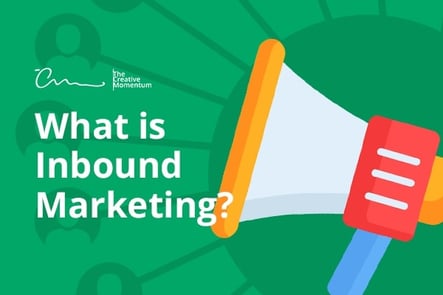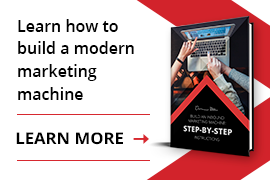
Even if you’ve never heard the term inbound marketing, you’ve almost certainly seen it in action.
Imagine going to Best Buy to pick out a new laptop. As you’re deciding between a couple options, a sales rep walks up and starts going on about how great laptop “A” is. It has incredible features! Look at the crystal clear HD display! You’ll die before the battery does!
But you aren’t listening. You’re not interested in being sold to—you’re not even sure what you want yet!
At this point, you’re more interested in discovering what options are available. You ditch the rep and notice that laptop B has a digital kiosk that explains the product’s benefits. You spend some time watching the videos, learning about the product, and forming a decision on your own.
You’re not ready to buy today, but as you leave the store, you’re struck by the difference in the two experiences:
- In the first experience, you were given a hard sales pitch that put pressure on you and put you off from considering the offer.
- In the second, you were free to discover information on your own, engage with sales staff to answer questions without pressure, and determine on your own whether the offer met your unique needs.
Experience B is the essence of inbound marketing: Marketers use digital assets to educate consumers and serve as resources, all the while establishing themselves as industry leaders who are confident enough in their product or service that they don't need to pressure the sale.
What does Inbound Look Like?
Inbound marketing is a comprehensive strategy that coordinates all aspects of a company’s digital presence to support business growth. All of your digital assets, from your website to your blogs to your email drip campaigns have a role to play in your inbound strategy.
Here’s an example of the steps a brand can follow to deploy an inbound marketing strategy:
- Perform market research on their target customers to learn the demographics, needs, and pain points of the target market.
- Reference or align with the marketing funnel concept—a classification system for determining which “buying stage” each potential customer is in.
- Produce content for each of these stages (awareness, consideration, decision) to directly address target market needs according to where the prospect is in the buyer journey.
- Build out the brand's content library until there's enough material to entice customers into action (i.e., signing up to an email list or downloading gated content offers that ask for an email address).
- From there, the company begins a series of targeted email communications that nurture the lead throughout their evaluative shopping process, such as calling for the prospect to download more content that leads the prospect closer to buying status. The end goal is to position the company as the expert resource most qualified to provide the solution to the customer’s problem.
Of course, there’s plenty more to inbound than that, but you get the idea: Inbound marketing involves enticing potential customers with value-driving materials and delivering the right message at the right time to encourage them to buy.
Permission Marketing: Why Inbound Works
Inbound tactics are characterized by a shift in marketing strategy from interruptive tactics to permission-based tactics. Interruptive strategies are things like billboards, commercials, cold calls, display ads, and pop-ups. These ask customers to stop what they’re doing so the company can shove a quick pitch in their faces. On the other hand, permission marketing means you don’t engage with prospects until they’ve already indicated their interest in your company.
This inherent trust (along with the low cost of lead acquisition!) is what makes inbound so appealing. Compared with the relatively high costs of paid advertising, it’s no surprise that organizations who succeed with inbound experience a 61 percent lower cost per lead when compared to companies using outbound tactics.
In fact, its growth has been so prolific that 33 percent of inbound marketers and 31 percent of outbound marketers now rank outbound marketing practices as one of their top wastes of time and resources. Not bad for a strategy that only entered the scene a few years ago.
Inbound Builds Trust
Inbound tactics rethink modern advertising strategies by making trust a priority. Rather than rushing to sell, they focus on building relationships. And as consumer fatigue for unwanted ads continues to grow, inbound strategies will become more and more valuable for the businesses that understand them.


